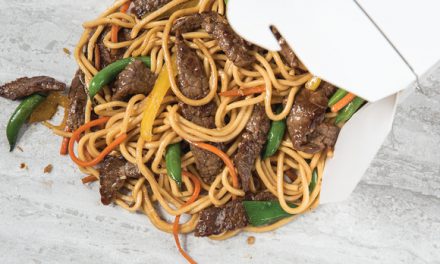
Step aside, tomahawk. There's a new jaw-dropper in town!
Picture this: you're seated at a table in your town's hot, new restaurant—the one you've been dying to try. In your peripheral vision, you notice a waiter carrying a large platter. You look over and see a long, frenched bone reaching for the ceiling. You assume it's the tomahawk steak your eyes glanced at on the menu, but as you take a second glance, something appears… different. The ribeye lays closer to the plate, stretching from edge to edge. "What could that be?" you think to yourself.
Say hello to our not-so-little, new friend: the scorpion steak!

While visiting the Meat Lab at the Certified Angus Beef ® Culinary Center, Greg Gaardbo of Chicago Culinary Kitchen was itching to test out an idea. During the beef butchery session, as discussion unfolded, Gaardbo asked Meat Scientist Diana Clark if the group could butterfly a tomahawk ribeye.
After all, when you find yourself in a 'beef playground', as guests often describe the center, there is only one thing to do: play! The steak was butterflied, and off to be cooked it went.
As hypothesized, the thinner take on a traditional tomahawk decreased the cook time significantly. Plus, with an increased amount of surface area, the steak acheived even more of the flavorful crust steak connoisseurs crave.
Looking for a buzz-worthy, Instagram-friendly steak? Look no further. Making your own scorpion steak takes just a few simple steps:
- Take a traditional tomahawk steak and slice the ribeye down the center so it lays flat away from the bone (essentially, butterfly the meat)
- Season as desired and sear both sides on the grill; cook to desired internal temperature
- Serve on a large platter, with ornamental pinchers, if you desire





